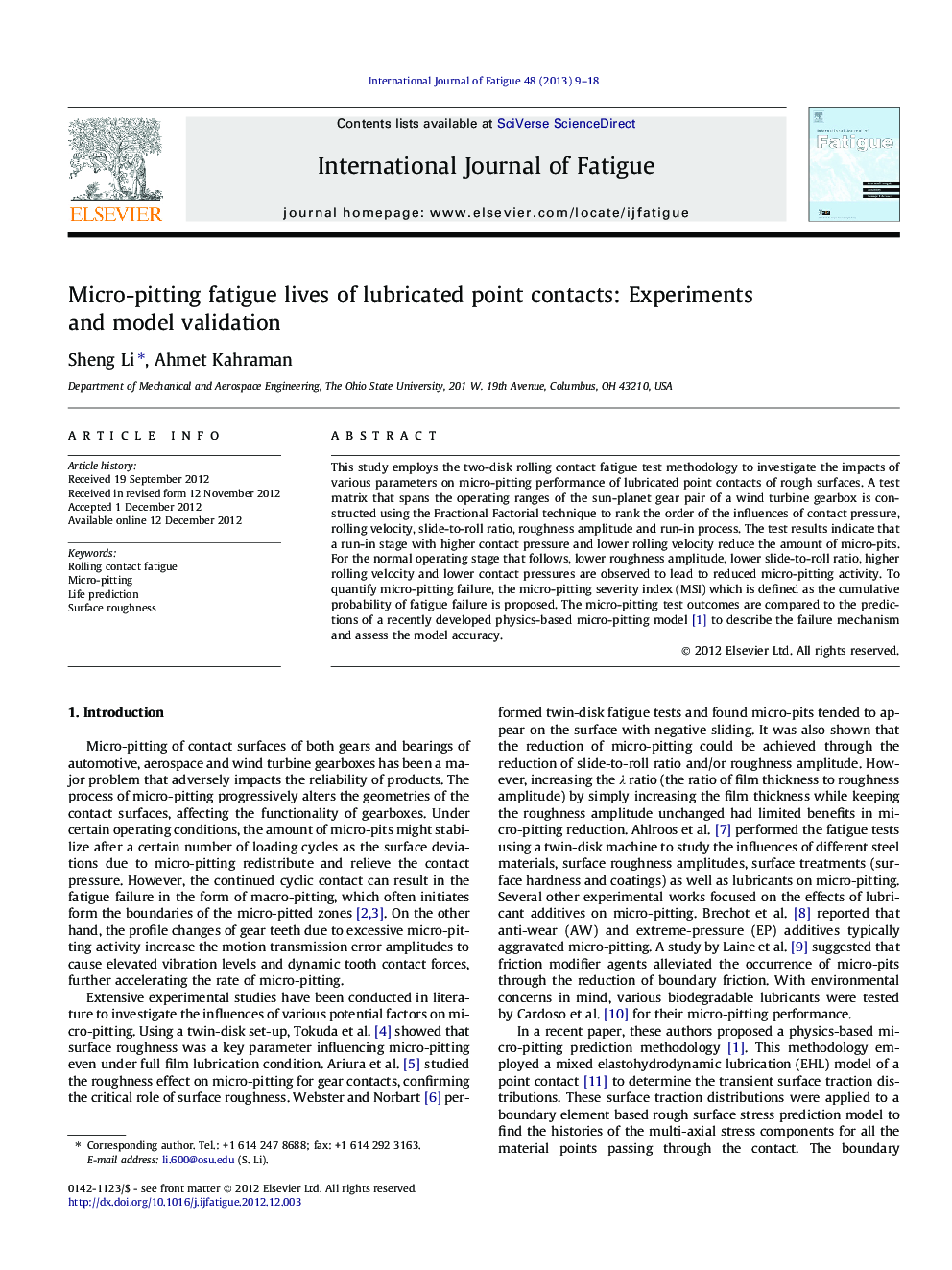| کد مقاله | کد نشریه | سال انتشار | مقاله انگلیسی | نسخه تمام متن |
|---|---|---|---|---|
| 780870 | 1463784 | 2013 | 10 صفحه PDF | دانلود رایگان |

This study employs the two-disk rolling contact fatigue test methodology to investigate the impacts of various parameters on micro-pitting performance of lubricated point contacts of rough surfaces. A test matrix that spans the operating ranges of the sun-planet gear pair of a wind turbine gearbox is constructed using the Fractional Factorial technique to rank the order of the influences of contact pressure, rolling velocity, slide-to-roll ratio, roughness amplitude and run-in process. The test results indicate that a run-in stage with higher contact pressure and lower rolling velocity reduce the amount of micro-pits. For the normal operating stage that follows, lower roughness amplitude, lower slide-to-roll ratio, higher rolling velocity and lower contact pressures are observed to lead to reduced micro-pitting activity. To quantify micro-pitting failure, the micro-pitting severity index (MSI) which is defined as the cumulative probability of fatigue failure is proposed. The micro-pitting test outcomes are compared to the predictions of a recently developed physics-based micro-pitting model [1] to describe the failure mechanism and assess the model accuracy.
► Investigate influences of various contact parameters on micro-pitting.
► Propose a new parameter for micro-pitting quantification.
► Compare model predictions with measurements to show good agreements.
Journal: International Journal of Fatigue - Volume 48, March 2013, Pages 9–18